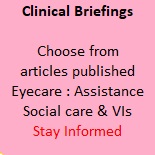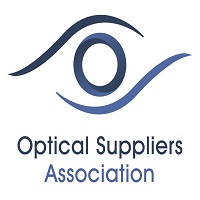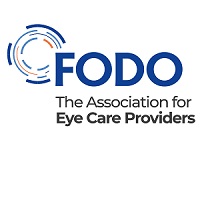Education
Reflections on the recent virtual webinar, sponsored by Optos PLC
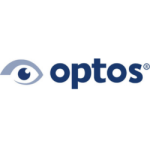
The recent virtual webinar, sponsored by Optos PLC
Preserving Vision: The Role of Lifestyle and Diet in Eye Health
For many optometrists, access to Optos’ ultra-widefield (UWF™) multimodality retinal imaging provides invaluable insights into their patients’ full eye health. Some have even stated they simply cannot work without it. This is particularly relevant to the monitoring of age-related macular degeneration (AMD), where advancements in the detection of peripheral retinal changes in AMD and geographic atrophy may be important in the context of new treatment innovations.
The recent virtual webinar, sponsored by Optos PLC and attended by over 500 UK healthcare professionals, explored this topic in depth. Featuring insights from leading UK optometrists Simon Browning, Mehul Doshi, and Ian Jarvis, the webinar delved into methods for detecting both central and peripheral changes seen in AMD and the role of a healthy lifestyle in preserving vision. The panellists shared real-life case studies and best practice management strategies for patients living with age-related retinal changes.
The Critical Role of Lifestyle and Diet
A key takeaway from the webinar was the critical role that lifestyle and diet play in maintaining eye health and preventing conditions like AMD. Unhealthy lifestyle factors, such as smoking, can significantly increase the risk of developing AMD. Whilst lung cancer is often cited as the major risk of smoking, the impact on vision can be equally severe, with smokers at risk of going blind decades earlier than non-smokers.
Simon Browning provided compelling patient case studies, which highlighted the stark reality of unhealthy lifestyle factors on eye health and how simple changes can make a huge difference. “We had a patient with very early signs of dry AMD as shown by optomap imaging and we could see hyper-fluorescence in the macular region,” Simon explained. The patient was a 64-year-old male who was referred to his practice who was overweight, had a poor diet, smoked, and his brother had wet AMD.
“We highlighted the importance of changes to his diet, to increase his exercise and how essential it is to stop smoking, and then encouraged him to take these steps.” The patient agreed and began a health improvement regime, which included more exercise, cutting out cigarettes, and adding more vegetables and oily fish into his diet. When he returned five months later, the optomap demonstrated improvements in his retinal function, with evidence of improvement in visual acuity and drusen regression. “We’re imaged him , including OCT and autofluorescence scans, and there was now no hyper-fluorescence and no evidence of drusen.
Even more encouragingly, these improvements were maintained across multiple visits, halting further deterioration to his vision. By recognising the need to remain resolute in his diet and exercise regime, the patient understood that a combination of healthy lifestyle behaviours assist preventing his condition from worsening. This case underscores the potential for significant improvement in eye health through early intervention and lifestyle modification.

The Impact of Advanced Imaging Technology
Optos’ high-resolution UWF imaging captures approximately 82% of the retina, something no other device can do in a single capture image. As the first optometrist to use ultra-widefield autofluorescence imaging in practice, Simon emphasises the value of the Optos system as an addition to his diagnostic tools. “It just makes logical sense that the earlier you can prevent something, the better the outcome is likely to be,” he said. “And this is really what we achieve with autofluorescence and peripheral imaging in AMD.”
Diet and lifestyle changes, combined with Optos’ imaging technology, empower healthcare professionals to optimise the detection and monitoring of AMD and geographic atrophy. The ability to overlay images from successive visits allows optometrists to track changes over time, facilitating frank discussions with patients about their lifestyle choices. Patients can see firsthand whether their condition is improving or deteriorating, making the implications of their lifestyle choices more tangible.
The Role of Optometrists: From Diagnosis to Preservation
The panel agreed that optometrists are no longer merely identifying diseases but are actively helping people maintain retinal function well into old age. “It’s all about that lifelong environment,” Simon concluded. “We have a much more fundamental role nowadays, and I now use the term “vision preservationists” when referring to the role of modern clinical optometrists. Our job is to preserve vision. Once we’ve preserved it, then we can focus on lifelong vision preservation which is where autofluorescence and being able to look at the functionality of the retina is the big game changer.”
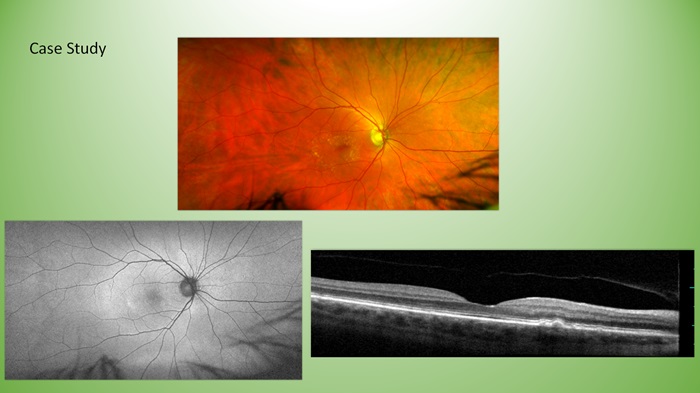
The use of autofluorescence imaging is transformative, providing real-time evidence of retinal functionality. This capability is crucial, as it allows optometrists to detect when the retina is under stress and intervene appropriately. The ability to visualise these changes helps patients understand the severity of their condition and the importance of adhering to lifestyle recommendations.
A Promising Future of Vision Preservation
The integration of advanced imaging technologies like Optos’ UWF and autofluorescence with proactive lifestyle and diet changes represents a significant advancement in the field of optometry. These tools not only enhance diagnostic capabilities but also enable optometrists to take on a more proactive role in preserving vision and promoting overall eye health. By focusing on early detection and intervention, along with lifestyle modifications, optometrists can help patients maintain their vision and quality of life for years to come.
Optometrists are encouraged to discuss lifestyle changes with their patients and utilise advanced imaging technologies to provide comprehensive eye care. With these combined efforts, the future of vision preservation looks promising.
Opchat News and Optos PLC were media partners for the provision of their exciting and thought provoking webinar.
Missed the Webinar? No problem you will find it here
Read more about Optos PLC here







